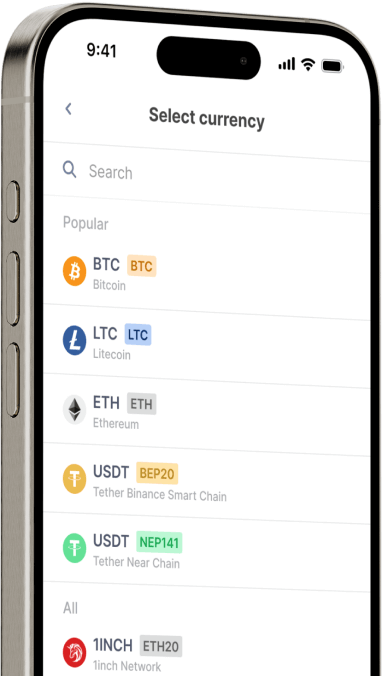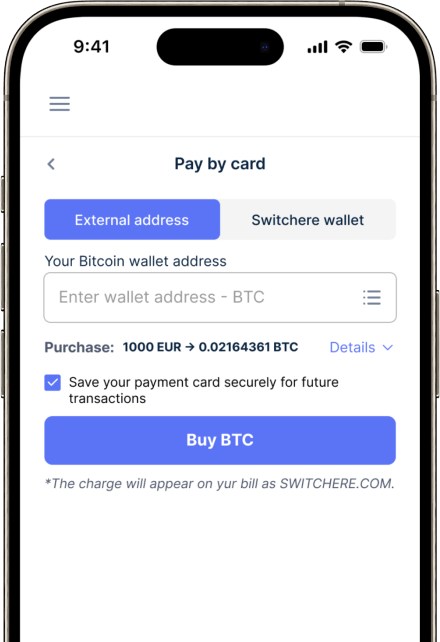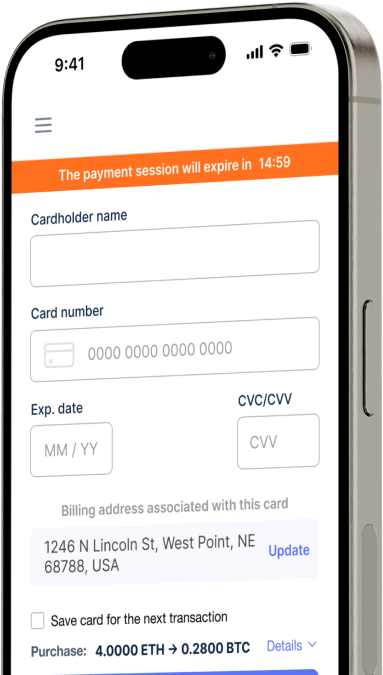Convert
Turkish lira (TRY) to Convex Finance (CVX) Instantly
Purchase Convex Finance (CVX) with Turkish lira (TRY) easily at Switchere and benefit from fast, secure transactions.
About
Convex Finance (CVX)
Convex Finance (CVX) operates as a pivotal DeFi protocol on the Ethereum blockchain, specifically engineered to optimize yield generation for Curve Finance (CRV) liquidity providers and CRV stakers. The platform's primary purpose is to allow users to access boosted CRV rewards without the necessity of personally locking substantial CRV for veCRV. Convex achieves this by aggregating CRV deposits from its users, converting them into veCRV, and strategically allocating this collective voting power to maximize CRV emissions for its integrated liquidity pools. This innovative approach within its smart contract architecture democratizes higher DeFi yields within the decentralized network.
The CVX token is central to the Convex Finance ecosystem, serving as both a utility and governance token. Holders can stake CVX to receive a proportional share of the platform's revenue, which is generated from performance fees on the boosted CRV earnings; this staking mechanism provides a direct incentive. Moreover, CVX token holders possess governance rights, enabling them to influence key protocol decisions and upgrades through its on-chain system. The tokenomics also incentivize liquidity for cvxCRV, a liquid staked derivative representing CRV deposited into Convex. As a dominant force in the "Curve Wars," Convex has established itself as a critical influence aggregator and yield optimization layer within the broader decentralized finance landscape, enhancing capital efficiency and shaping digital asset strategies.
Buy Other 150+ Cryptocurrencies for Turkish lira (TRY)
Other Coins for Turkish lira (TRY)
-
TRY to ZRX
-
TRY to 1INCH
-
TRY to AAVE
-
TRY to ACH
-
TRY to ALGO
-
TRY to TLM
-
TRY to ANKR
-
TRY to APE
-
TRY to NFT
-
TRY to API3
-
TRY to APT
-
TRY to ARPA
-
TRY to AUDIO
-
TRY to AVAX
-
TRY to AVAX
-
TRY to AXS
-
TRY to BADGER
-
TRY to BAL
-
TRY to BNT
-
TRY to BAT
-
TRY to BNB
-
TRY to BSW
-
TRY to BSV
-
TRY to BLUR
-
TRY to BONE
-
TRY to CTSI
-
TRY to CELR
-
TRY to CELO
-
TRY to CEL
-
TRY to LINK
-
TRY to CHZ
-
TRY to CHR
-
TRY to C98
-
TRY to COMP
-
TRY to CFX
-
TRY to PEOPLE
-
TRY to CVX
-
TRY to ATOM
-
TRY to CTC
-
TRY to CRV
-
TRY to DAI
-
TRY to DASH
-
TRY to MANA
-
TRY to DENT
-
TRY to DGB
-
TRY to DYDX
-
TRY to XEC
-
TRY to EOS
-
TRY to ETC
-
TRY to ENS
-
TRY to ETHW
-
TRY to FET
-
TRY to FIL
-
TRY to FLOKI
-
TRY to GALA
-
TRY to GNO
-
TRY to ONE
-
TRY to HBAR
-
TRY to HOT
-
TRY to HOOK
-
TRY to ICX
-
TRY to ILV
-
TRY to IMX
-
TRY to INJ
-
TRY to ICP
-
TRY to IOST
-
TRY to IOTX
-
TRY to JASMY
-
TRY to JST
-
TRY to KAVA
-
TRY to KCS
-
TRY to KSM
-
TRY to KNC
-
TRY to LDO
-
TRY to LQTY
-
TRY to LPT
-
TRY to LOOKS
-
TRY to LRC
-
TRY to LUNA
-
TRY to MKR
-
TRY to MASK
-
TRY to EGLD
-
TRY to ALICE
-
TRY to NEAR
-
TRY to XEM
-
TRY to NEXO
-
TRY to NOT
-
TRY to NMR
-
TRY to OKB
-
TRY to OMG
-
TRY to ONT
-
TRY to EDU
-
TRY to OP
-
TRY to OGN
-
TRY to CAKE
-
TRY to PAXG
-
TRY to PENDLE
-
TRY to DOT
-
TRY to POL
-
TRY to QTUM
-
TRY to QNT
-
TRY to RDNT
-
TRY to XRD
-
TRY to RVN
-
TRY to REN
-
TRY to RSR
-
TRY to RLC
-
TRY to RPL
-
TRY to SFP
-
TRY to SHIB
-
TRY to SKL
-
TRY to SXP
-
TRY to STND
-
TRY to STG
-
TRY to XLM
-
TRY to GMT
-
TRY to STORJ
-
TRY to STMX
-
TRY to SUSHI
-
TRY to SNX
-
TRY to USDT (Polygon)
-
TRY to USDT (AVAC)
-
TRY to USDT (BEP20)
-
TRY to USDT (ERC20)
-
TRY to USDT (SPL)
-
TRY to USDT (NEP141)
-
TRY to USDT (FA2)
-
TRY to USDT (TRC20)
-
TRY to USDT (JETTON)
-
TRY to XTZ
-
TRY to GRT
-
TRY to SAND
-
TRY to TFUEL
-
TRY to THETA
-
TRY to RUNE
-
TRY to TON
-
TRY to TUSD (BEP20)
-
TRY to TUSD (TRC20)
-
TRY to TWT
-
TRY to UOS
-
TRY to UMA
-
TRY to UNI
-
TRY to USDC (Polygon)
-
TRY to USDC (SPL)
-
TRY to USDC (OP)
-
TRY to USDC (BEP20)
-
TRY to USDC (AVAC)
-
TRY to USDC (ARB)
-
TRY to USDC (ERC20)
-
TRY to VET
-
TRY to VRA
-
TRY to WAXP
-
TRY to WOO
-
TRY to WLD
-
TRY to WBTC
-
TRY to WMINIMA
-
TRY to XDC
-
TRY to YFI
-
TRY to YGG
-
TRY to ZIL
How to Buy Convex Finance (CVX)
Frequently Asked Questions
-
What is the best way to buy Convex Finance (CVX) with Turkish Lira (TRY)?
To buy Convex Finance (CVX) with Turkish Lira (TRY), you typically use a cryptocurrency exchange that acts as a TRY fiat on-ramp. The common method involves a Turkish bank transfer (EFT/Havale) to a local, regulated exchange to acquire a base asset like USDT. Then, you transfer this digital asset to a global exchange with a liquid CVX market to complete the trade. This entire process requires full KYC/AML compliance for a secure transaction.
-
What are the typical payment methods and fees when using Turkish Lira (TRY) as a fiat on-ramp?
The primary payment method for TRY fiat on-ramps is a direct bank transfer, known locally as EFT or Havale, from a Turkish bank account under your name. Credit or debit card purchases are less common and may incur higher fees. Deposit fees for bank transfers are often low or zero on Turkish exchanges, but be aware of withdrawal fees and the trading fees on the exchange's order book when you execute a trade.
-
Is a direct TRY/CVX trading pair common, and what influences its liquidity?
A direct TRY/CVX trading pair is highly uncommon on cryptocurrency exchanges. Liquidity for DeFi tokens like CVX is concentrated in pairs against major assets like USDT, USDC, or ETH on global platforms. Therefore, the most liquid path involves converting TRY to one of these base assets first. The overall trading volume and depth of the order book for these major CVX pairs are the primary factors determining transaction efficiency and minimizing slippage.
-
Why is acquiring CVX important for DeFi users involved in Curve Finance?
Acquiring CVX is key for DeFi users on Curve Finance because the Convex protocol allows liquidity providers to earn boosted CRV rewards without needing to lock CRV tokens for veCRV themselves. By staking CVX, users can also earn a share of the platform's fees and, by locking it as vlCVX, gain governance rights within the Curve ecosystem, making it a crucial digital asset for advanced yield farming strategies.
-
After buying CVX with TRY, what is the most secure way to store this digital asset?
The most secure storage method for your CVX tokens is a self-custody digital wallet where you control the private keys. For long-term holding and significant amounts, a hardware wallet (cold storage) is highly recommended to protect against online threats. Since CVX is an ERC-20 token, it is compatible with any Ethereum Virtual Machine (EVM) wallet, such as MetaMask or a Ledger device, which ensures you have sovereign control over your DeFi assets.
-
Beyond boosted rewards, what are the core functions of the CVX token within its tokenomics?
The core functions of CVX, central to its tokenomics, are governance and fee sharing. By locking CVX into vlCVX (Vote-Locked CVX), token holders gain the ability to vote on Curve Finance gauge weights, effectively directing CRV emissions. Additionally, vlCVX holders receive a portion of the Convex protocol's earnings, which are derived from the performance fees charged to liquidity providers. This creates a powerful incentive alignment between the protocol and its token holders.




